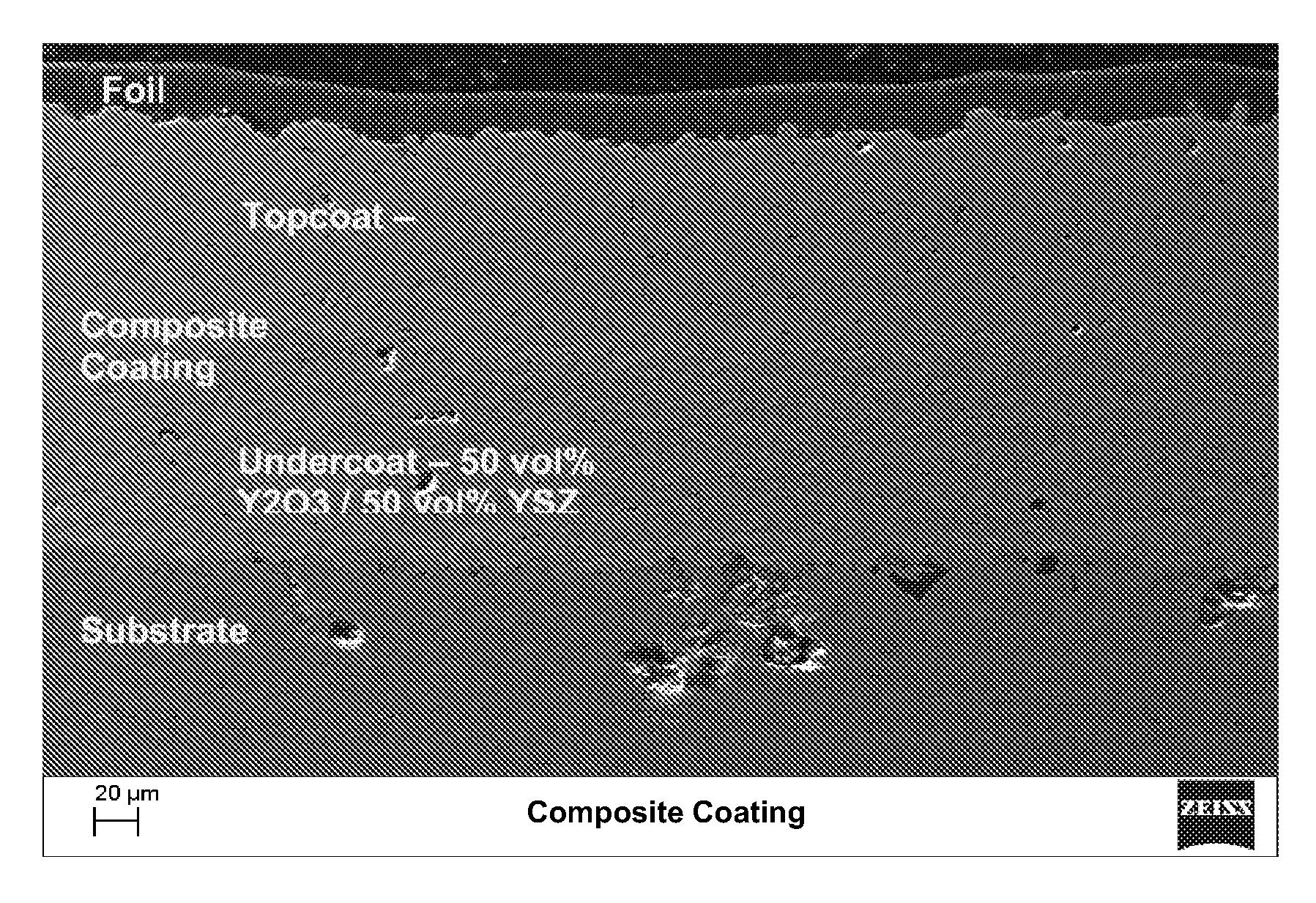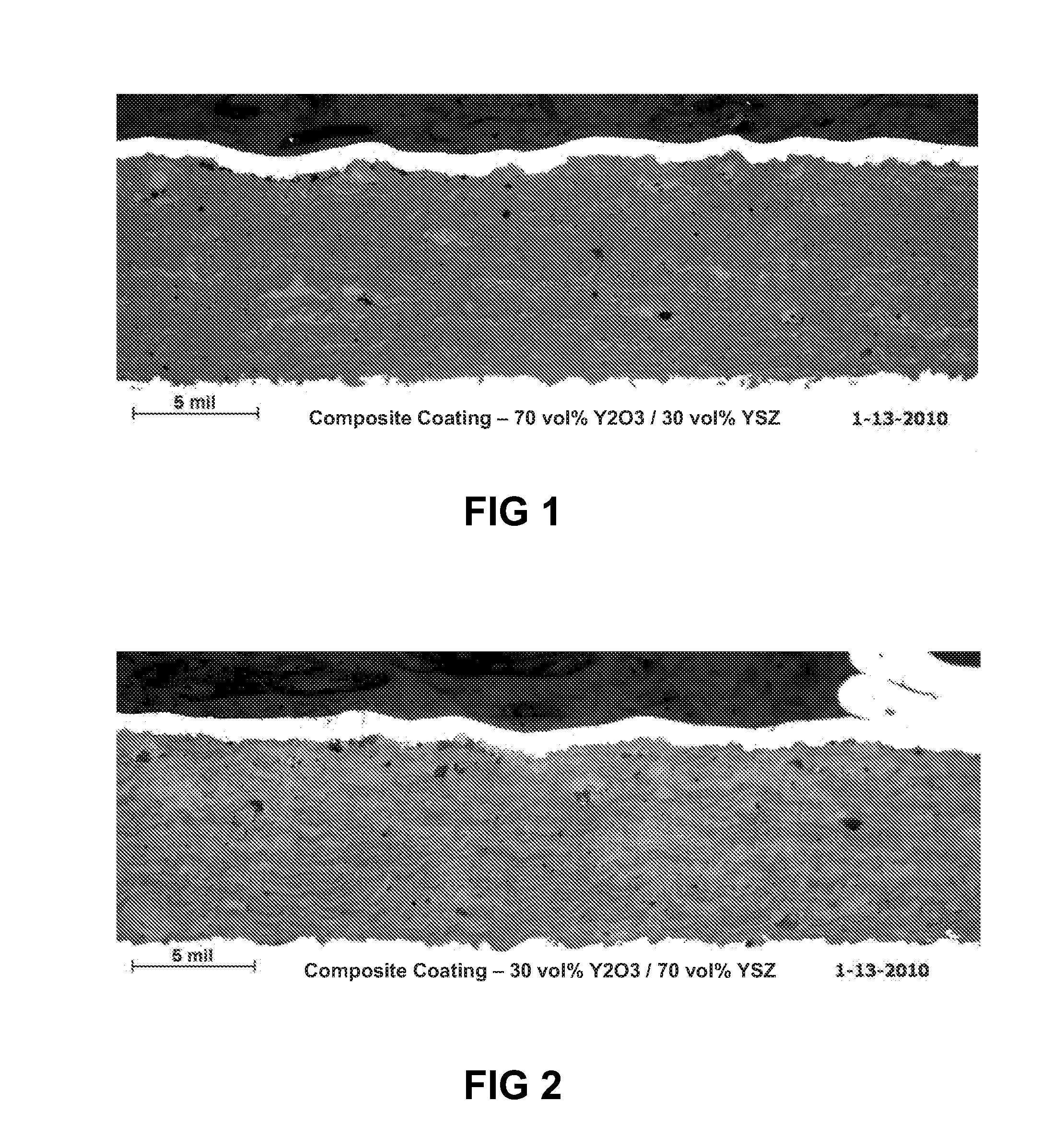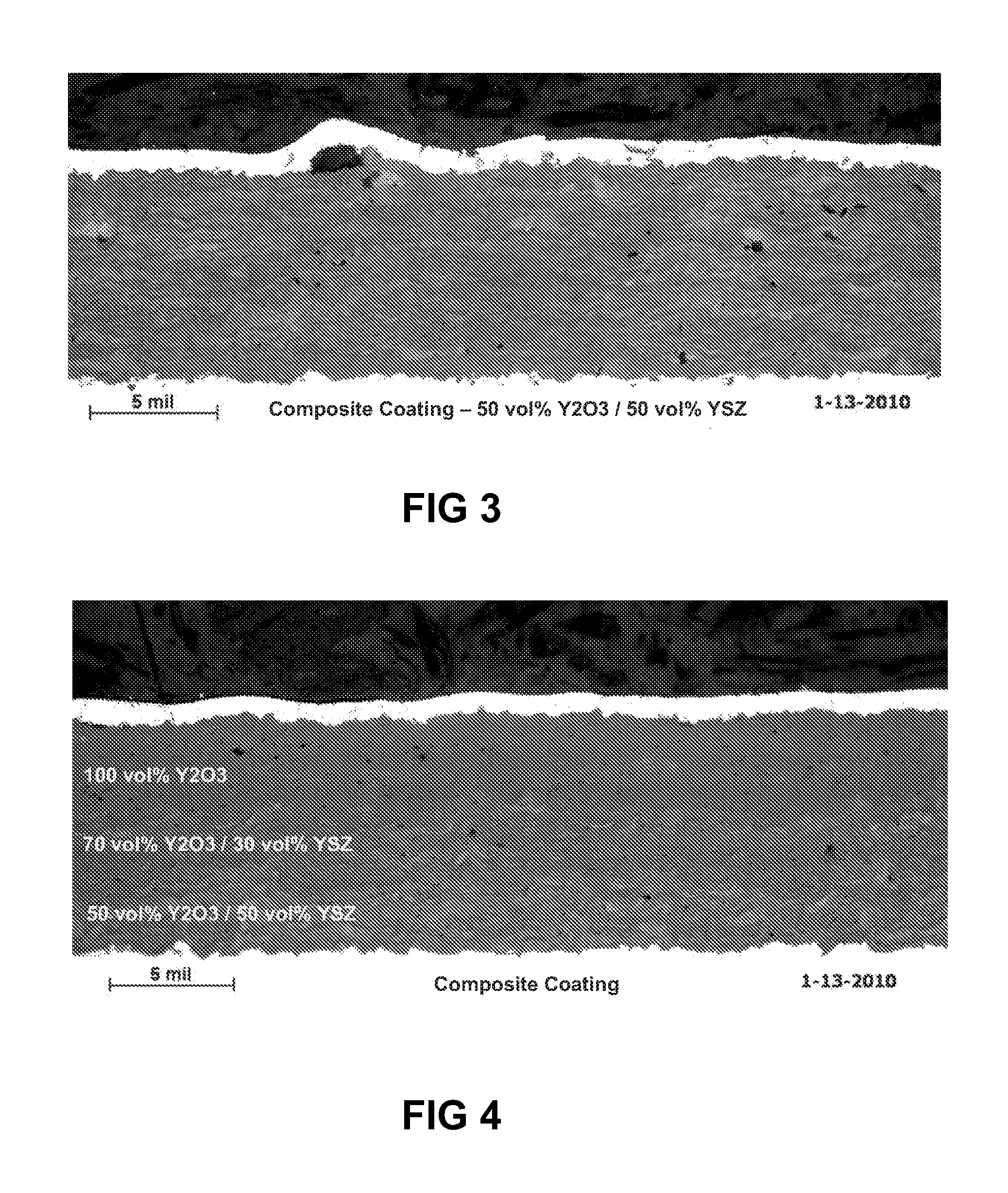Thermal spray composite coatings for semiconductor applications
a technology of composite coatings and semiconductors, applied in the direction of superimposed coating process, ceramic layered products, natural mineral layered products, etc., can solve the problems of increasing the severity of the cleaning process required for the process chamber and component parts, affecting the performance of the coating, so as to improve the corrosion resistance and corrosion resistance of the composite coating, improve the effect of erosive and corrosive attack and reduce the level of erosive and corro
- Summary
- Abstract
- Description
- Claims
- Application Information
AI Technical Summary
Benefits of technology
Problems solved by technology
Method used
Image
Examples
example 1
[0116]The feasibility of manufacturing composite coatings for improved plasma erosion and chemical corrosion behavior was documented through optical and scanning electron microscopy (SEM) micrographs of composite coating cross-sections. The composite coatings were produced using the plasma spray technique in which multiple powder dispensers were utilized to supply feedstock to a single Praxair Surface Technologies, Inc. (PST) plasma spray torch that was controlled by a PST gas panel. Volume percentages of each phase were regulated by controlling the feed rates of each powder dispenser.
[0117]Optical micrographs of polished cross-sections from four different composite coatings comprised of Y2O3 and 17 weight % yttria stabilized zirconia (YSZ) are presented in FIGS. 1-4. FIGS. 1, 2 and 3 illustrate various volume percentages of the two phases, which are randomly and uniformly dispersed throughout the volume of coating. The ratios presented include 30 volume % Y2O3 and 70 volume % YSZ, ...
example 2
[0119]Plasma erosion resistance of a 50 volume % Y2O3 and 50 volume % 17 weight % YSZ uniformly distributed composite coating was characterized in comparison to 100 volume % Y2O3 coatings and 100 volume % 17 weight % YSZ coatings. A reactive ion etch (RIE) method was utilized plasma erode the coatings. The RIE was performed for a total of 60 hours and employed two different gas etch chemistries, SF6:O2 and CF4:O2. The measurement technique utilized to quantify the plasma erosion rates provided a precision level of ±0.5 μm. A Zeiss Confocal microscope (CSM 700) was used to measure the step height across a masked interface post plasma erosion. Coating surfaces were polished to very smooth finishes (i.e., Ra˜0.2 μm) in order to ensure the step height due to plasma erosion could clearly be differentiated. Two samples per coating type were tested with each sample having 20 individual plasma erosion rate measurements taken for a total of 40 total measurements per coating condition.
[0120]F...
example 3
[0122]Ceramic composite coatings were manufactured consistent with those described in Example 1. The ceramic composite coatings demonstrate improvements in coating performance, specifically, maintaining high levels of coating bond strength due to increased corrosion resistance. In addition, certain ceramic composite coatings demonstrate these improvements in corrosion resistance, while still maintaining the highest levels of plasma erosion at the free surface.
[0123]Semiconductor chamber components in dry etch tools are often limited in lifetime by the number of wet chemical cleaning cycles parts experience before coating degradation and / or delamination occurs. In service, semiconductor chamber components build up etch by-products primarily consisting of polymer deposits at the part's surface, which must be periodically removed to maintain high quality semiconductor chips at an acceptable yield rate. Cleaning the chamber components generally involves mechanical scrubbing, harsh acids...
PUM
| Property | Measurement | Unit |
|---|---|---|
| temperatures | aaaaa | aaaaa |
| diameter | aaaaa | aaaaa |
| diameter | aaaaa | aaaaa |
Abstract
Description
Claims
Application Information
 Login to View More
Login to View More - R&D
- Intellectual Property
- Life Sciences
- Materials
- Tech Scout
- Unparalleled Data Quality
- Higher Quality Content
- 60% Fewer Hallucinations
Browse by: Latest US Patents, China's latest patents, Technical Efficacy Thesaurus, Application Domain, Technology Topic, Popular Technical Reports.
© 2025 PatSnap. All rights reserved.Legal|Privacy policy|Modern Slavery Act Transparency Statement|Sitemap|About US| Contact US: help@patsnap.com



